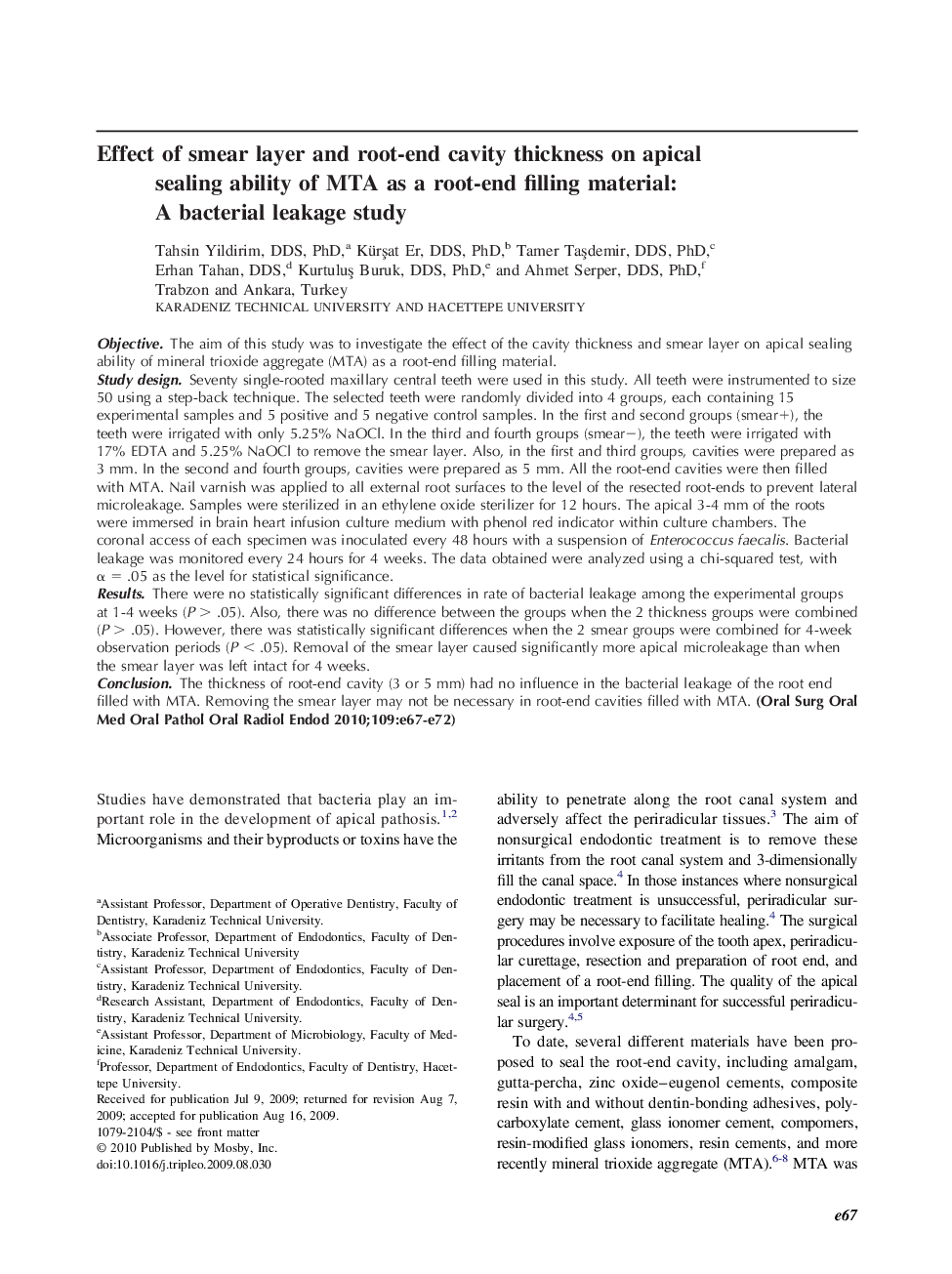| Article ID | Journal | Published Year | Pages | File Type |
|---|---|---|---|---|
| 3167760 | Oral Surgery, Oral Medicine, Oral Pathology, Oral Radiology, and Endodontology | 2010 | 6 Pages |
ObjectiveThe aim of this study was to investigate the effect of the cavity thickness and smear layer on apical sealing ability of mineral trioxide aggregate (MTA) as a root-end filling material.Study designSeventy single-rooted maxillary central teeth were used in this study. All teeth were instrumented to size 50 using a step-back technique. The selected teeth were randomly divided into 4 groups, each containing 15 experimental samples and 5 positive and 5 negative control samples. In the first and second groups (smear+), the teeth were irrigated with only 5.25% NaOCl. In the third and fourth groups (smear−), the teeth were irrigated with 17% EDTA and 5.25% NaOCl to remove the smear layer. Also, in the first and third groups, cavities were prepared as 3 mm. In the second and fourth groups, cavities were prepared as 5 mm. All the root-end cavities were then filled with MTA. Nail varnish was applied to all external root surfaces to the level of the resected root-ends to prevent lateral microleakage. Samples were sterilized in an ethylene oxide sterilizer for 12 hours. The apical 3-4 mm of the roots were immersed in brain heart infusion culture medium with phenol red indicator within culture chambers. The coronal access of each specimen was inoculated every 48 hours with a suspension of Enterococcus faecalis. Bacterial leakage was monitored every 24 hours for 4 weeks. The data obtained were analyzed using a chi-squared test, with α = .05 as the level for statistical significance.ResultsThere were no statistically significant differences in rate of bacterial leakage among the experimental groups at 1-4 weeks (P > .05). Also, there was no difference between the groups when the 2 thickness groups were combined (P > .05). However, there was statistically significant differences when the 2 smear groups were combined for 4-week observation periods (P < .05). Removal of the smear layer caused significantly more apical microleakage than when the smear layer was left intact for 4 weeks.ConclusionThe thickness of root-end cavity (3 or 5 mm) had no influence in the bacterial leakage of the root end filled with MTA. Removing the smear layer may not be necessary in root-end cavities filled with MTA.
